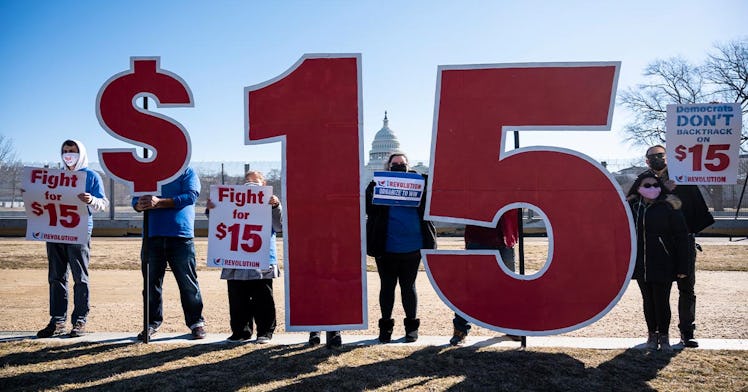Wages Are Increasing, But Can’t Keep Up With Inflation (For Now)
The current economic situation is complicated. Here's what families need to know.

For the first time, the average wage of both restaurant and grocery store workers in the United States is more than $15 an hour. 80 percent of workers across industries make at least that much—up from 60 percent just seven years ago.
That’s the good news. The bad news is that inflation is preventing workers from enjoying the spoils of their hard-won raises.
Here’s what you need to know about the current situation—and what the future likely holds.
Wages Are Up
Wages are up for a host of different reasons. Increased government benefits during the pandemic, particularly unemployment insurance, along with the health risk of in-person employment for workers and their families made people much more comfortable being unemployed. With fewer people seeking work, companies were forced to increase wages to recruit and retain staff. This dynamic has likely become even more pronounced as businesses have begun to reopen and competition for workers—including many who refuse to accept the indignities during the pandemic that they might have before it—subsequently increased.
Additionally, large companies from Target to CVS to Disney to Chipotle have very publicly increased (or announced their intention to increase) their starting pay, something that a recent study found pushes smaller competitors to follow suit.
It all adds up to a dramatic rise in compensation—2.8 percent between March and June of this year alone.
But Prices Are Up, Too
The Consumer Price Index, “a measure of the average change over time in the prices paid by urban consumers for a market basket of consumer goods and services,” shows a consistent rise in prices across categories. Prices in July 2021 were 5.4 percent higher than they were in July 2020.
Pandemic supply chain interruptions have slowed the production of a variety of consumer goods, creating shortages that are fueling inflation. For instance, the average price of a used car or truck rose by 41.7 percent in the past year because of a shortage of computer chips necessary to manufacture new vehicles.
The Balance Is Not in Workers’ Favor at the Moment
The balance of these changes is, at the moment, not in workers’ favor.
“When you have a hot economy, you get faster wage growth and you get faster price growth. And right now, the price growth is winning the race,” Harvard economist Jason Furman told Politico.
Furman’s analysis found that real compensation (wages adjusted for inflation) was rising prior to the pandemic but is now two percent below that trend. That puts it just below where it was in December of 2019, the last pre-pandemic month for which there is data.
What Comes Next?
There are reasons for workers to be optimistic about where things are headed. For one, wage increases tend to be sticky—when wages go up, they don’t often go down again—so normal (i.e. non-adjusted for inflation) compensation should remain higher than it was pre-pandemic.
And fundamentally, the inflation that’s currently happening is likely transient. Massive government stimulus packages consistently lead to an increase in prices, and while inadequate to properly address the pandemic, the level of government spending on unemployment benefits, stimulus checks, and other programs is historically huge. It’s also clearly waning, with additional federal unemployment benefits due to expire next month.
The fact that there are such large gaps between price increases in different sectors suggests, as Rep. Alexandria Ocasio-Cortez has argued, that inflation is happening because of specific pandemic conditions like the aforementioned supply chain issues. If there were fundamental problems at the heart of the economy, there would likely be more even price increases across the board instead of particularly dramatic increases (as with used cars) raising the overall average.
Supporting her theory is that the slowing of inflation could already be happening. The White House Council of Economic Advisors pointed out that the 0.5 percent increase month-over-month in July was under June’s 0.9 percent rate, a deceleration owing primarily to changes in the motor vehicle sector.
The CEA also pointed out that “one month does not make a trend” but called the July numbers encouraging. If August shows a continued deceleration, it becomes even more likely that those higher wages translate to increased buying power (and, ideally, economic security) for America’s workers.